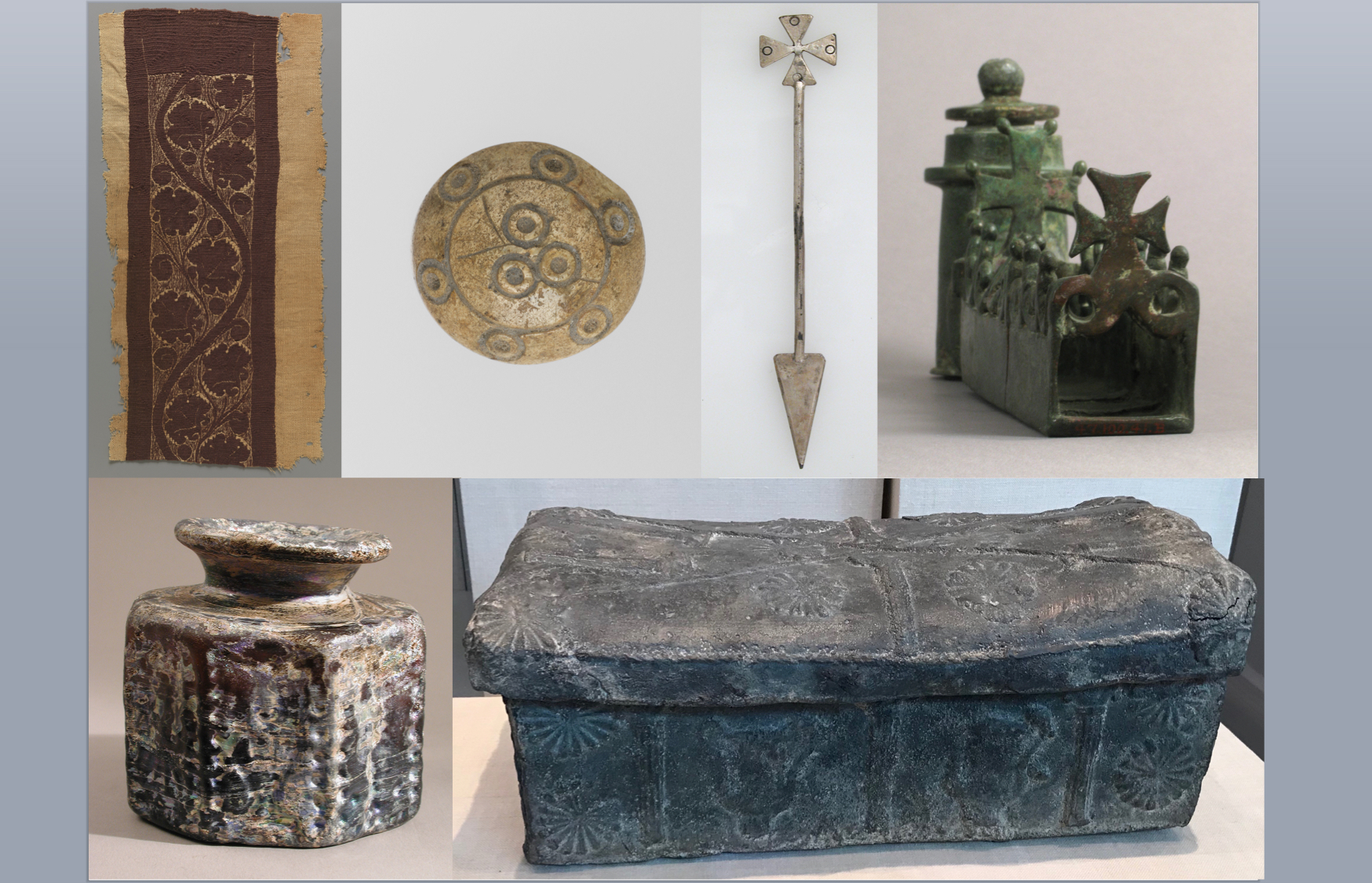In an earlier post we drew attention to the exhibition Hear Me Now! which has recently closed at the Met. There is no known Roman equivalent of David Drake, known as Dave. Although we know so little about him, still the details of Dave’s life can be contested. All we know for certain about Agatho the silversmith is what he had carved into his funeral portrait (c. 25 CE), which is now in the Getty Villa.[1] An inscription below his bust reads “Publius Curtilius Agatho, freedman of Publius, silversmith,” reminding us that Agatho lived and died with his former master’s name preceding his own, but also that he was proud of his trade. Agatho is shown holding a smith’s mallet and chisel, and also a small silver cup, presumably one he made himself. We can just make up a raised design of a figure, which may be a dancing satyr, not unlike the design on a silver wine cup, the Vicarello Goblet, made at exactly this time and now displayed in the Cleveland Museum of Art.[2]
The number of Roman slaves who could be granted freedom – manumitted – in any year was restricted in Agatho’s lifetime. After 4 CE (Lex Aelia Sentia), according to the wish of the emperor Augustus (d. 14 CE), the master must be at least twenty, and the slave at least thirty years old, at the time of manumission. By the age of thirty, we might guess that Agatho had been a silversmith for two decades. We can also guess that part of the price of his freedom was a legally-binding commitment to providing Publius Curtilius with a proportion of his skilled labor for free for the rest of his life (operae libertorum); by “his life,” I mean Agatho’s life, for the gift of free labor might be inherited by Publius’ heir if that was specified in the contract that Agatho signed. In other words, skilled freedmen like Agatho might be offered the opportunity to purchase their freedom for credit rather than cash; and although legally they were freedmen, only death would free them of their debt of work.
Agatho would have owed only part of his time to Publius. If Agatho earned enough money from other work, then he may have been able to delegate his operae libertorum to a silversmith of equal skill, perhaps one he trained himself, whom he paid. That skilled worker could not have been another of Publius Curtilius’s slaves, of course. This may have included Agatho’s own children, if they were before Agatho’s manumission. Any child Agatho fathered after his manumission would be freeborn, although not without some restrictions to what he might achieve as a citizen. Finally, if Agatho made enough money, as a freedman he would be permitted to own his own and train his own slaves. There are 197 references in Justinian’s Digest of Roman law concerning operae libertorum that address these various scenarios.[3]
[1] Grave Relief of a Silversmith, Getty Villa: https://www.getty.edu/art/collection/object/104034
[2] John D. Cooney. “The Vicarello Goblet”, The Bulletin of the Cleveland Museum of Art 54/ii (1967), 36-41, which notes traces the history of the goblet since its discovery in 1862 and notes that basic analysis of the silver was undertaken in 1966/7.
[3] Cameron Hawkins, Roman Artisans and the Urban Economy (Cambridge: Cambridge University Press, 2016), 130-91.
This is the first of three posts that formed part of a short lunchtime lecture delivered at the Humanities Institute, Pennsylavania State University, in February 2023.

